Groups joined
Discussions started
Resources added
Hattie Branson added a new Discussion - "Modelling functional connectivity?" to Geospatial
Hattie Branson added a new External Link - "Help us understand the use of ecological connectivity in conservation" to Connectivity
Hattie Branson added a new External Link - "Cloud-Based Remote Sensing with Google Earth Engine" to Geospatial
Groups
Group
- Latest Discussion
- Online Ocean-Focused GIS Course
- Latest Resource
- /
- AI for Conservation Office Hours: 2025 Review
Read about the advice provided by AI specialists in AI Conservation Office Hours 2025 earlier this year and reflect on how this helped projects so far.
Group
- Latest Discussion
- New Group Proposal: Systems Builders & PACIM Designers
- Latest Resource
- /
- Application of computer vision for off-highway vehicle route detection: A case study in Mojave desert tortoise habitat
Driving off-highway vehicles (OHVs), which contributes to habitat degradation and fragmentation, is a common recreational activity in the United States and other parts of the world, particularly in desert environments with fragile ecosystems. Although habitat degradation and mortality from the expansion of OHV networks are thought to have major impacts on desert species, comprehensive maps of OHV route networks and their changes are poorly understood. To better understand how OHV route networks have evolved in the Mojave Desert ecoregion, we developed a computer vision approach to estimate OHV route location and density across the range of the Mojave desert tortoise (Gopherus agassizii). We defined OHV routes as non-paved, linear features, including designated routes and washes in the presence of non-paved routes. Using contemporary (n = 1499) and historical (n = 1148) aerial images, we trained and validated three convolutional neural network (CNN) models. We cross-examined each model on sets of independently curated data and selected the highest performing model to generate predictions across the tortoise's range. When evaluated against a ‘hybrid’ test set (n = 1807 images), the final hybrid model achieved an accuracy of 77%. We then applied our model to remotely sensed imagery from across the tortoise's range and generated spatial layers of OHV route density for the 1970s, 1980s, 2010s, and 2020s. We examined OHV route density within tortoise conservation areas (TCA) and recovery units (RU) within the range of the species. Results showed an increase in the OHV route density in both TCAs (8.45%) and RUs (7.85%) from 1980 to 2020. Ordinal logistic regression indicated a strong correlation (OR = 1.01, P < 0.001) between model outputs and ground-truthed OHV maps from the study region. Our computer vision approach and mapped results can inform conservation strategies and management aimed at mitigating the adverse impacts of OHV activity on sensitive ecosystems.
Group
- Latest Discussion
- Free online tool to analyze wildlife images
- Latest Resource
- /
- AI for Conservation Office Hours: 2025 Review
Read about the advice provided by AI specialists in AI Conservation Office Hours 2025 earlier this year and reflect on how this helped projects so far.
Group
- Latest Discussion
- Online Ocean-Focused GIS Course
Group
- Latest Discussion
- Free online tool to analyze wildlife images
- Latest Resource
- /
- IUCN Red list R client.
Everything you need on the IUCN Red list is now accessible from R, outputted as tibble to facilitate data query, analysis, and visualization.
Group
- Latest Resource
- /
- Nature Tech for Biodiversity Sector Map launched!
Conservation International is proud to announce the launch of the Nature Tech for Biodiversity Sector Map, developed in partnership with the Nature Tech Collective!
Group
- Latest Discussion
- New Group Proposal: Systems Builders & PACIM Designers
- Latest Resource
- /
- Population genetics with eDNA
Using SNP markers with an Amphibian species, we were able to identify a total of 17,617 nuclear single nuclear polymorphisms shared across individual, pond eDNA (4 populations) and tank eDNA samples (where tadpoles of the four ponds were housed), enabling us to detect genetic structuring across sampling locations (previously demenstrated with microsatellites and tissue samples), consistent with individual-based estimates. Collecting only the matrix (here water) allows describing the existing population structure...that could be a nice progress for conservation biology...
Group
- Latest Discussion
- G-DiNC 2026: Global Drones in Nature Conservation Symposium & Expo
- Latest Resource
- /
- Siguiendo Ballenas: rastreo satelital desde el espacio revela sus rutas migratorias // Tracking right whales from outer space reveals their migratory routes
Un ambicioso proyecto internacional está usando transmisores satelitales para monitorear los viajes migratorios de ballenas francas australes, permitiendo entender sus sorprendentes patrones de desplazamiento en tiempo real. // An ambitious international project is using satellite tags to monitor the migratory journeys of southern right whales, allowing researchers to understand their surprising movement patterns in real time.
Group
- Latest Discussion
- Beyond the Tech Hype / Más Allá del Hype Tecnológico
Please help us by participating in a MSc research project on what you consider to be 'evidence' in your work in conservation.
Bookmarks
Keep track of the resources that matter to you! Collections let you save, organise, and share content from all over the WILDLABS community. Create your first collection by clicking on the bookmark icon wherever you see it.
My Courses
These are your in-progress and completed courses. Explore more courses through our catalogue.
To find courses you have created, see your "My Draft Content" or "My Content" tabs.
Settings
Hattie Branson's Content
GIS E-learning Course 4: Becoming Confident in Spatial Analysis & Geoprocessing


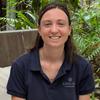

GIS E-learning Course 4: Becoming Confident in Spatial Analysis & Geoprocessing
GIS E-learning Course 4: Becoming Confident in Spatial Analysis & Geoprocessing




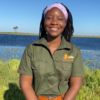



GIS E-learning Course 3: Introduction to ArcGIS Pro




GIS E-learning Course 3: Introduction to ArcGIS Pro
GIS E-learning Course 3: Introduction to ArcGIS Pro



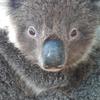
GIS E-learning Course 2: Introduction to QGIS




GIS E-learning Course 2: Introduction to QGIS
GIS E-learning Course 2: Introduction to QGIS







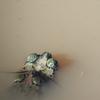







GIS E-learning Course 1: What is GIS and why should you care?




GIS E-learning Course 1: What is GIS and why should you care?
GIS E-learning Course 1: What is GIS and why should you care?











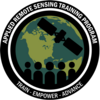







Discussion
Calling practitioners working in connectivity... we're doing some thinking around modelling functional connectivity, and the data that should go into it!If you're modelling...
11 April 2024
If you are a conservation researcher or practitioner, help us understand the use of ecological connectivity through this survey. Your feedback will help to provide insights for the development of new tools and guidance...
20 March 2024
Comprehensive resource for Google Earth Engine - this ebook is an excellent source of fundamentals lessons and applications ranging from terrestrial to aquatic. It comes with a fully equipped code repo, explainers, and...
12 October 2022
Good evening everyone!! TL;DR: Great news, free ~5 m satellite imagery for the tropics. Comes analysis-ready in RGB, download coming mid-October via Planet Explorer. There...
14 October 2020


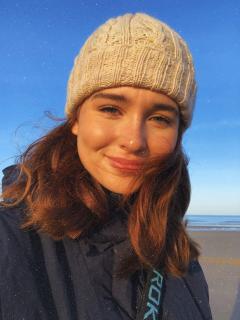

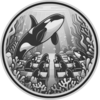






























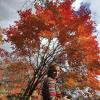



























Hattie Branson's Comments
Be part of the conversation! Once you've joined a discussion in the community, your comments will show up here.